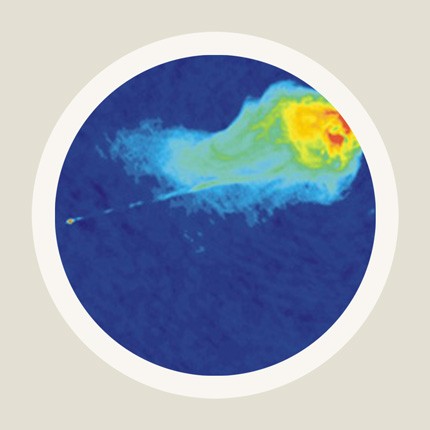Relativity and the Quantum / Elementary Tour: Conclusion
The combination of relativity and quantum theory has led to some of the greatest triumphs of theoretical physics, but also to its most persistent unsolved questions. The marriage of special relativity and quantum concepts leads to so-called relativistic ...
Relativity and the Quantum / Elementary Tour part 3: The need for quantum gravity
So far in the pages of Elementary Einstein, we have encountered two examples in which the limits of general relativity were reached. Both cases involved space-time-singularities. The first example lurked in the interior of a black hole. As briefly described ...
Relativity and the Quantum / Elementary Tour part 2: Evaporating black holes?
Can the concepts of relativistic quantum field theory be carried over to curved spacetimes, which include gravitational sources and are described by general relativity? The answer is a cautious "yes". The most notable step in this direction was taken by the ...
Cosmology / Elementary Tour part 5: Dark matter and dark energy
While the predictive power of the big bang models is impressive, they also show us what we don't know about the universe. Not only about the distant past, as detailed on the previous page, but also about the present universe: If you look around, all material ...
Cosmology / Elementary Tour part 3: The early universe
An expanding universe, with the distances between galaxy increasing all the time, must have been much more dense, and the galaxies much closer together, in the past. The details follow from Einstein's equations which connect the way expansions runs its course ...
Black Holes & Co. / Elementary tour: Conclusion
In the physics of neutron stars and black holes, we clearly see the central role of general relativity in modern astrophysics. Relativistic physics is necessary to fully understand the most energetic phenomena in the universe - from supernova explosions of ...
Black holes & Co. / Elementary tour part 3: Supermassive black holes
Soon after the beginning of radio astronomy came the discoveries of ever more variants of active galactic nuclei. An example is shown below: The image illustrates radio observations, showing a "radio galaxy" (the tiny dot in the center) which shoots beams ...
Black holes & Co. / Elementary tour part 2: Black holes
When even more massive stars explode in a supernova, the collapsing central region will generically have so much mass that even neutron matter cannot halt the collapse. The collapse continues, and when this happens, a black hole is born (more precisely: a ...












